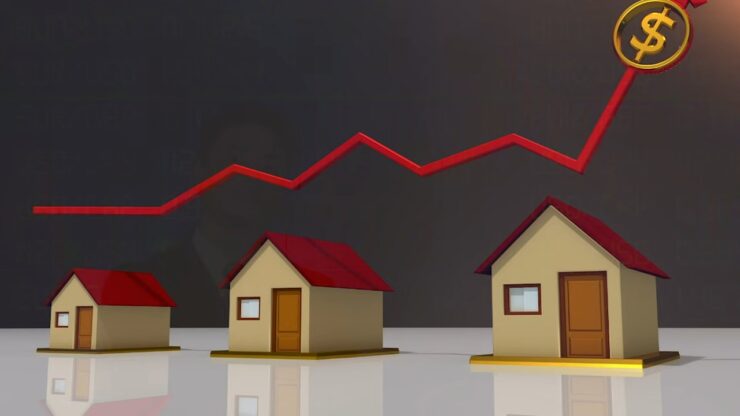In the world of real estate, figuring out how much a property is worth can be a bit like solving a puzzle. Think of it like this: if homes were artworks, their value would depend on the artist’s style and the quality of the paint used.
As a real estate pro, you’ll often play detective, piecing together clues to determine a property’s price tag, especially when buying or selling.
Enter the Comparative Market Analysis (CMA). It’s like a magic tool that helps agents and brokers match a property’s price with what their clients are looking for.
So, what’s a CMA? It’s a deep dive into the property market to see how similar homes are priced. But don’t confuse it with an appraisal – that’s a whole different ball game. A CMA report is like a treasure map, guiding you through key details of properties to help set the right price.
Ready to make your own CMA? We’ve got the steps to help you become a real estate wizard!
Key takeaways:
- A CMA in real estate is a comparative market analysis that estimates a property’s worth based on the sales of comparable properties in the area.
- While a CMA estimates a property’s value like an appraisal does, CMAs help real estate agents and brokers set fair listing prices and aren’t exclusive to licensed appraisers.
- You can conduct a CMA by evaluating the property a client wants to buy or sell and determining how much comparable properties are sold for in the area.
What Even Is CMA?
In the real estate world, a CMA is like a detective’s magnifying glass. It stands for Comparative Market Analysis and helps estimate how much a property might be worth.
Imagine you have three houses on the same street: one’s a mansion, one’s a cottage, and one’s a bungalow. They’re all different, right? But if they’re similar in size, design, and location, they can be compared. These similar properties are called “comparables” or “comps” for short.
When real estate agents or brokers use a CMA, they’re basically playing matchmaker. They match your property with these “comps” to give an idea of its value. It’s like looking at price tags in a store, but for houses. This way, clients get a clear picture of the average price for properties in their area, making it easier to buy or sell homes. Think of CMAs as a cheat sheet for understanding local property prices!
Appraisal Against CMA
Imagine you’re at a talent show. A CMA is like the audience’s vote – it’s based on general observations and comparisons. On the other hand, an appraisal is like the judge’s scorecard – it’s more official and detailed.
Both CMAs and appraisals aim to figure out a property’s worth, but they have different levels of formality. Appraisals are the big guns, done by licensed professionals called appraisers. They’re often called in by mortgage companies to double-check a property’s value before they lend money. It’s like a safety net for the lender.
On the flip side, CMAs are more like quick snapshots. Real estate agents and brokers whip them up to give clients an idea of local property prices. The best part? You don’t need a special license to do a CMA.
So, while both tools help in understanding a property’s value, an appraisal is the official stamp, and a CMA is the friendly neighborhood advice.
Purpose In Real Estate
Think of a CMA in real estate as a trusty compass. While you don’t always need it to navigate, it sure makes the journey smoother!
In the bustling world of real estate, a CMA is like a secret weapon for agents and brokers. Here’s why:
- Setting the Right Price for Sellers: Imagine you’re selling lemonade. Price it too high, and no one buys. Too low, and you’re giving it away. A CMA helps agents find that sweet spot for property prices – high enough to make a good profit but attractive enough to lure in buyers.
- Guiding Buyers to Fair Deals: No one likes overpaying. Brokers can use CMAs to ensure buyers aren’t paying more than they should. It’s like having a price-check tool to ensure you’re getting a good deal on a purchase.
- Smooth Sailing at Closing: Ever been to a party where everything just flows? That’s what a CMA can do for the closing process. By setting a price close to the final appraisal from the get-go, it reduces hiccups and makes the entire process smoother for everyone involved.
Elements of A Report
A CMA report may include descriptions of the property and three to five similar properties recently sold in the area. In addition to pictures of the comps, the report may describe each property’s:
- Age
- Condition
- Style (like Cape Cod, ranch or colonial)
- Square footage
- Yard size
- Yard features (like landscaping or patios)
- Number of bedrooms
- Number of bathrooms
- Heating and cooling systems
- Extra amenities like a fireplace or pool
- Sales price
- Adjusted sales price
- Adjusted price per square foot
How To Do: A Step-by-Step Guide
1. The Early Bird Gets the Worm Begin your CMA journey as early as possible. If you’re selling, draft a CMA before putting the property on the market to nail the right price. If you’re on the buying side, whip up a CMA post your first chat with the client.
2. Location, Location, Location! Kick off your CMA by diving deep into the property’s surroundings. Are there cool parks, top-notch schools, or trendy eateries nearby? These can boost a home’s price tag. Also, take a stroll and soak in the neighborhood vibe – the presence of greenery, the state of nearby houses, and even the sidewalks can play a role. As you grow in your real estate journey, you’ll become a neighborhood guru in no time!
3. Dive into the Property’s DNA Beyond the basics like size and age, get up close and personal with the property. Visit in person to spot unique features – maybe it’s a swanky kitchen finish, a lush garden, or a fancy upgrade. These little details can make a big difference in value.
4. Hunt for Home Twins Your goal? Find 3-5 homes that recently sold and are strikingly similar to your property. The closer they are, the better. If they sold in the last 3-6 months, even better! But remember, this might be a breeze in some areas and a challenge in others. If you’re in a place with diverse homes or fewer sales, you might need to cast a wider net or look back a bit further in time.
5. Time for Some Math Magic Now, adjust your property’s price based on how it stacks up against the comps. Maybe it has one less bedroom or a bigger garden. Assign dollar values to these differences. If this sounds tricky, don’t fret! Your local real estate pals might have some handy data, or you can play detective and research prices. Remember, it’s all about comparing – is your property superior or inferior to the comps?
6. Crunch Those Numbers With your adjusted prices, work out the price per square foot for each home. This gives you a neat way to compare them. But remember, every sale has its story. Maybe one buyer got a sweet cash deal, or a seller gave their cousin a discount. If something seems off, don’t hesitate to dig deeper or chat with the listing agent.
7. Present with Pizzazz Time to wrap it all up in a snazzy report! Use software to craft a sleek CMA that’ll wow your clients. Organize it well, so it’s easy to follow. A great tip? Start with a cover page showcasing the comps in a neat chart, complete with photos and key numbers. This way, your clients can spot differences at a glance.
And there you have it! With these steps, you’re all set to craft a top-notch CMA that’ll make you the star of the real estate show.
FAQ
How does CMA work?
CMA, or Comparative Market Analysis, works by comparing a property to similar properties (known as “comparables” or “comps”) that have recently sold in the area. By analyzing these comps, real estate professionals can estimate the current market value of a property.
What is the main focus of the CMA?
The primary focus of a CMA is to determine a property’s market value based on local sales data. It helps in setting a competitive price for sellers and provides buyers with a fair purchase price.
What are the steps in CMA?
The CMA process involves:
- Assessing the property’s location and features.
- Gathering details about the property.
- Identifying comparable homes that have recently sold.
- Making adjustments for differences between the properties.
- Calculating the price per square foot.
- Compiling and presenting the data in a report.
What is the benefit of CMA?
A CMA offers multiple benefits. It helps sellers price their property competitively, aids buyers in ensuring they’re getting a fair deal, and can streamline the closing process by setting realistic price expectations from the start.
Who needs it?
Both sellers and buyers benefit from a CMA. Sellers use it to determine an optimal listing price, while buyers use it to gauge if a property is priced fairly.
What is the power of it?
The power of a CMA lies in its ability to provide a data-driven approach to property valuation. It offers an objective view of the market, helping stakeholders make informed decisions.
How hard is the CMA?
Crafting a CMA requires a keen understanding of the local real estate market and attention to detail. While it’s a systematic process, its accuracy depends on the quality of data and the expertise of the real estate professional conducting it.
Final Words:
Understanding the intricacies of a Comparative Market Analysis (CMA) is crucial for anyone venturing into the real estate world. Whether you’re a seller aiming for the best price or a buyer ensuring you’re making a sound investment, a CMA is your guiding light. With its data-driven insights, it demystifies the property valuation process, ensuring transparency and fairness in every transaction.

















